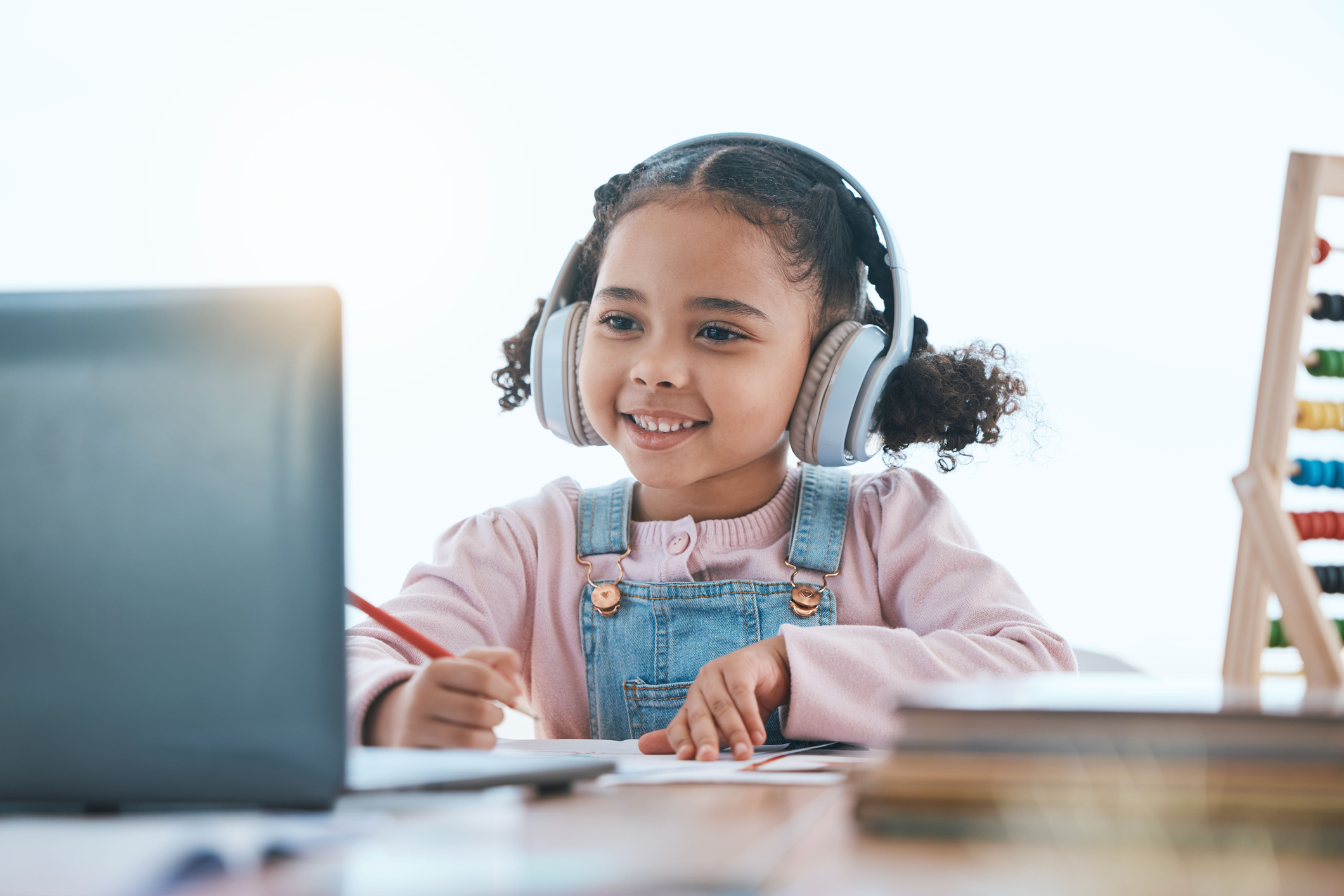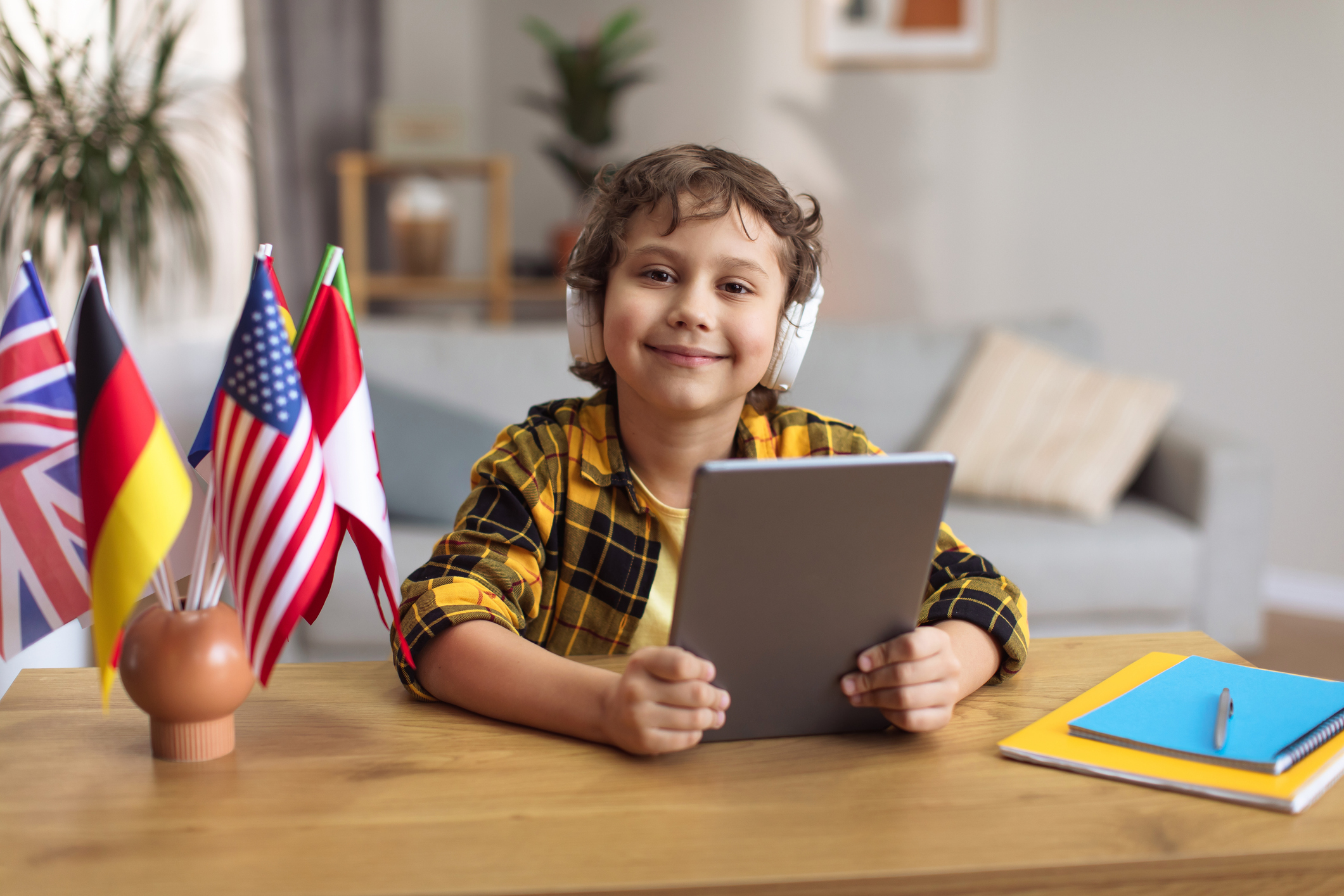Dual Language Immersion Programs: A Guide for Multilingual and Monolingual Families



Want your child to be fluent in two or more languages? Dual language programs are one of the best ways to make that a reality!
What are dual language programs? How are they different from traditional language classes? What are the benefits of these programs?
Good questions!
In this article, we’ll discuss the concept of dual language programs, shedding light on what they are and how they play a pivotal role in helping children develop linguistic proficiency and cultural understanding.
We’ll also share information on how your child can try a dual language immersion program for free.
Let’s begin!
What is a dual language program?
Dual language programs are educational initiatives designed to immerse students in learning two languages simultaneously.
Unlike traditional language classes that focus solely on language acquisition, dual language programs integrate language learning into the overall curriculum, providing a holistic approach to education.
For example, students in a dual language program may engage in math, science, and social studies classes taught in both languages.
This method ensures that they not only master the intricacies of each language but also learn to seamlessly apply their language skills across various subjects.
How do dual language programs work?
This integrated approach of dual language programs aims to develop a deep understanding of both languages, making the learning experience more dynamic and relevant to real-world applications.
What’s the structure of a dual language class? Here are some common approaches to dual language instruction.
Two-way immersion (TWI)
In a two-way immersion program, students from two language groups receive instruction in both languages. This type of dual language education program promotes cross-cultural interactions as students work together to learn and develop biliteracy in both languages.
Two-way immersion programs come in two models. In a 50/50 model, instruction is evenly split between the two languages. In a 90/10 model, the majority of instruction is in the non-dominant language initially, gradually shifting to an equal distribution over time.
For example, at LingoCircle, we offer online language classes for kids in French, Spanish, English, Chinese, Korean, and Arabic. In our dual language classes, the teacher alternates between the target language and the children’s primary language.
This dual language format is excellent for beginner students that do not fully understand the target language yet. As they improve their target language comprehension, the class gradually shifts to a full immersion class.
One-way immersion
The one-way immersion model focuses on students from a single language background, providing instruction in both their native and target languages.
For example, a school might offer one-way immersion in English for native Spanish speakers. In this type of school, native Spanish-speaking students would gradually build proficiency in English while maintaining and further developing their Spanish skills.
Late-exit transitional bilingual programs
Late-exit transitional bilingual programs are typically for students who enter the educational system with proficiency in their native language, often as English language learners.
These programs recognize the importance of maintaining and building upon students’ linguistic strengths. Students receive significant instruction in their native language until around fourth or fifth grade before transitioning to more English instruction.
The delayed transition to more English instruction allows students to solidify their academic foundation in the native language, ensuring a smoother transition into English-dominant classrooms.
Early-exit transitional bilingual programs
Early-exit bilingual programs have students transition to English instruction earlier, typically around second or third grade.
For example, a school implementing an early-exit program might integrate specialized language support and English language development classes into the curriculum during the early grades.
By doing so, students receive targeted instruction to build their English proficiency while continuing to develop their skills in the native language.
Foreign language in elementary schools (FLES)
FLES programs introduce a second language at an early age, often starting in elementary school. While some FLES programs may not be strictly dual language, they lay the foundation for later bilingual education.
For example, a FLES program might expose native English-speaking students to basic vocabulary, language structures, and cultural elements of Mandarin Chinese through engaging activities, songs, and interactive lessons.
Heritage language programs
Heritage language programs cater to students from a particular linguistic or cultural background, aiming to maintain and strengthen their heritage language skills.
For example, in the US, there are many students from Latin American backgrounds who are fluent in conversational Spanish but may lack formal literacy skills or linguistic proficiency in more specialized domains.
Heritage language programs for these students focus on developing advanced language skills, including reading, writing, and academic vocabulary, to ensure a well-rounded linguistic competency. These programs also often incorporate cultural elements to deepen students’ connection to their heritage.
What are the benefits of dual language programs?
Children who participate in dual language programs often achieve bilingual proficiency along with a wide range of additional benefits.
Here are a few benefits that we find particularly appealing for families considering enrolling their child in a dual language program.
Academic success
Studies have shown that students in dual language programs academically perform as well as or even surpass their peers in monolingual programs.
For example, a study conducted in Portland Public Schools revealed that students randomly placed in dual-language immersion programs demonstrated superior performance on state reading tests.
Specifically, dual language students surpassed their monolingual peers by 13 percent of a standard deviation in grade 5 and an impressive 22 percent of a standard deviation in grade 8.
Cognitive advantages
Research suggests bilingual individuals exhibit enhanced cognitive skills, including better problem-solving, critical thinking, and creative abilities.
Dual language programs have also been linked to improved executive functions such as working memory, attention control, and cognitive flexibility.
In fact, research from the Georgetown University Medical Center found that brain scans of bilinguals showed more gray matter in regions that involved executive function than monolinguals.
Linguistic flexibility
Bilingual individuals often develop linguistic flexibility, enabling them to switch between languages and adapt to various linguistic contexts easily. This skill is valuable in today’s dynamic and multicultural environments.
Dual language learners also often develop a heightened awareness of language structures and nuances. This metalinguistic awareness enhances their language and literacy skills, contributing to effective communication in both languages.
Global competence
The world is becoming more and more interconnected. Dual language programs empower students with the skills to communicate across cultural boundaries, promoting global competence, appreciation for foreign cultures, and increased cultural sensitivity.
Long-term career opportunities
Proficiency in multiple languages is an asset in the job market. Dual language program graduates are better equipped to pursue career opportunities in their home country and abroad.
In fact, recent research shows the following career benefits to speaking multiple languages:
- Bilingual or multilingual professionals can earn 5%-20% more per hour than their monolingual peers
- 9 out of 10 employers rely on employees who can speak languages other than English
- 1 in 3 employers report a language skills gap among employees and job applicants
- 1 in 4 employers has lost business due to lacking employees with adequate foreign language skills
Language maintenance and heritage preservation
For students from culturally diverse backgrounds, dual language programs play a crucial role in maintaining and preserving their heritage language. Dual language education helps prevent language loss within immigrant or diaspora communities.
Dual language programs can also promote positive socioemotional development by helping students develop a greater sense of identity, pride, and belonging in their linguistic and cultural heritage.
Additional resources on dual language immersion programs
Want to learn more about dual language education programs to ensure you make informed decisions for your child? Here are some additional resources:
- How to Raise a Bilingual Child [Tips, Strategies, and FAQs] | LingoCircle
- Dual Language and Multilingual Education – Center for Applied Linguistics
- Why Dual Language Works for Everyone – Language Magazine
- Dual Language Programs – National Clearinghouse for English Language Acquisition & Language Instruction Educational Programs (NCELA)
- The Impact of Early Language Learning – American Council on the Teaching of Foreign Languages (ACTFL)
Try a free online dual language immersion class for kids
Want your child to experience the transformative power of dual language programs? We invite you to sign up for a free trial class at LingoCircle!
We provide engaging, comprehensive, and convenient dual language immersion classes online for children ages 3-15. Our certified, native-speaking educators offer French, Spanish, English, Chinese, Korean, and Arabic language classes.Sign up to see how LingoCircle combines dual language education with cultural exploration, ensuring your child becomes bilingual while embracing a global perspective!


Simple Ways to Learn a Second Language at Home
Get resources and tips to help supplement your bilingual education journey at home.
By providing your email you are signing up to receive emails from Bilingual Bebe. Privacy Policy







